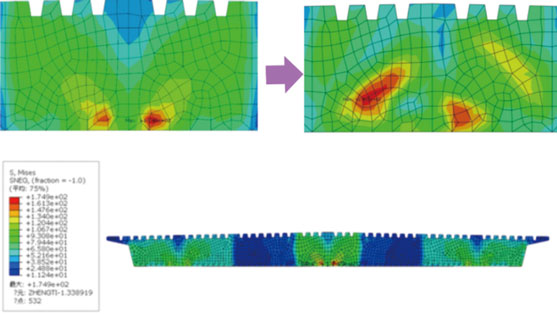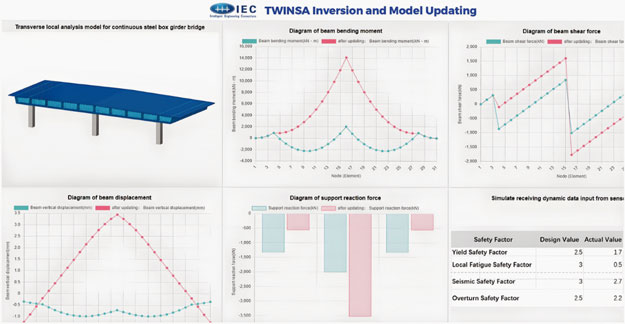
TWINSA
Case Study
TWINSA Insights
This condition is seriously not compliant with standards. In design stage, the structure was designed with full compliance, but that kind of compliance is based on assumptions. But the real world is not perfect.
Static implications:
Significant shift and increase of transverse bending momentum
Shift of shear forces
Shift and increased stress concentrations
drastic change of structural boundary conditions
Dynamic implications:
Changes in modal properties
Increased stress range Altered seismic responses
Further actionable insights:
Fatigue life projections
Deterioration analysis
Updates to safety reserves
Re-evaluation of structural safety

The maximum stress concentration had a 67% increase from design state, recorded at 174 MPa

Significant changes to structural status under Bearing Function Failure States

TWINSA Adaptive Digital Twin Inversion platform with FEA API with minimum computational requirements
The TWINSA Inversion and Model Updating Platform uses well-defined boundary conditions monitored, streamlining model updates and enhancing computational efficiency. Unlike traditional methods like Frequency Response Functions (FRFs), TWINSA simplifies updates by using known forces and conditions. This greatly reduces computational demands while ensuring accurate updates to structural parameters and safety factors, all computed through the FEA API.










